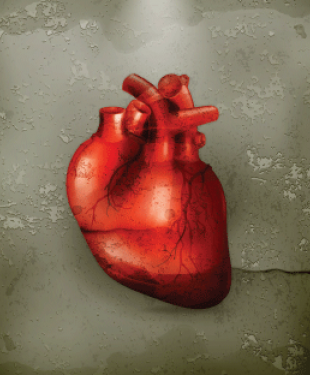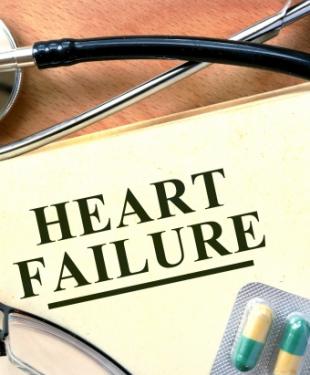Blue Heading H1
Blue Heading H2
Blue Heading H3
Blue Heading H4
Blue Heading H5
Blue Heading H6
Light Blue Heading H1
Light Blue Heading H2
Light Blue Heading H3
Light Blue Heading H4
Light Blue Heading H5
Light Blue Heading H6
Magenta Heading H1
Magenta Heading H2
Magenta Heading H3
Magenta Heading H4
Magenta Heading H5
Magenta Heading H6
Join the growing MyLVAD community with over 23,000 members, including LVAD recipients, caregivers, and medical professionals.
Register to participate in the Community Forums. They are an excellent way to connect with other caregivers—to hear about their experiences, ask questions and find friendship and support.
Multiple health problems can lead to the development of congestive heart failure. These may include:
- Coronary artery disease (the narrowing of the arteries)
- Heart attacks High blood pressure
- Obesity Genetic factors / congenital heart conditions
- Viruses or infections Pregnancy (heart failure that occurs during or after pregnancy)
Heart failure can occur on the left, right or both sides of the heart, but generally starts on the left side. Left-side failure happens when the heart can’t pump enough oxygen-rich blood out to the rest of the body.
The heart is a muscular organ about the size of a fist, whose job is to pump blood throughout the entire body. The heart has two sides, right and left, each with two chambers: an upper chamber (atrium) and a lower chamber (ventricle). These four chambers work together in a constant cycle to circulate blood in order to keep the body functioning:
- The right atrium receives oxygen-depleted blood from the body and sends it to the right ventricle.
- The right ventricle then sends the oxygen-depleted blood to the lungs to absorb more oxygen. The left atrium brings oxygen-rich blood from the lungs into the left ventricle.
- The left ventricle then sends the oxygen-rich blood out to the rest of the body through the largest blood vessel in the body, the aorta.
- The circulated blood eventually returns to the right atrium and the cycle continues.
Congestive heart failure is a condition in which the heart can’t pump enough blood to meet the body’s needs. This doesn’t mean the heart has stopped working entirely, or is about to, but that it’s no longer doing its job adequately. As a result, people with heart failure often feel weak, tired or short of breath.
Congestive heart failure is a progressive disorder, meaning it grows worse over time. The early stages can sometimes be managed with medicines and lifestyle changes, which help reduce symptoms. Eventually though, an advanced stage of congestive heart failure may lead to the need for a heart transplant or VAD (ventricular assist device). The most common type of VAD is an LVAD (left ventricular assist device).
If you or someone you love has congestive heart failure, you’re not alone: About 5 million people are living with congestive heart failure in the United States, and approximately 10 million in Europe. But there is hope: therapies like LVADs can dramatically extend and improve quality of life for people with advanced heart failure.
Patients with advanced heart failure may benefit from an LVAD while they are waiting for a heart transplant. In the case of patients who are not candidates for a transplant, an LVAD can provide long-term support. Learn more about LVADs and how they work.
- Symptoms are no longer manageable with medication
- A patient has been hospitalized multiple times for heart failure issues
- The heart is able to pump only 25% or less of the blood it receives (normally it can pump 60% or greater)
For someone with advanced heart failure, even everyday activities like walking or climbing stairs can feel exhausting and leave them breathless. The three most common symptoms of the advanced stages of heart failure are:
- General fatigue Shortness of breath
- Swelling of the feet, ankles or legs
Other symptoms that may also accompany heart failure include:
- Coughing
- Difficulty sleeping
- Excessive, unexplained weight gain
- Swelling of the abdomen
- Loss of appetite or indigestion
- Nausea or vomiting Irregular or rapid pulse
- Heart palpitations
Patients with advanced heart failure may benefit from an LVAD while they are waiting for a heart transplant. In the case of patients who are not candidates for a transplant, an LVAD can provide long-term support. Learn more about LVADs and how they work.
Lorem ipsum dolor sit amet, consectetur adipiscing elit. Vivamus pretium, est sit amet varius consequat, tortor massa dapibus ante, sit amet tristique augue velit a nibh. Nunc quis placerat leo. Etiam hendrerit sollicitudin orci, sed laoreet risus varius ut. Proin ultrices massa vitae ipsum consequat, eu sagittis orci finibus. Aliquam varius nulla ligula, in commodo tortor condimentum quis. Pellentesque semper bibendum ligula, id sodales turpis molestie sit amet. Aliquam placerat pulvinar mi, et ultrices enim volutpat non. Phasellus tortor velit, viverra eget metus non, congue eleifend eros. Integer sed est arcu. Ut ut blandit ipsum, vel fringilla tortor.
Fusce accumsan lacus quis lacus porta tincidunt. Vivamus magna dolor, lacinia a quam quis, lacinia accumsan velit. Nullam lobortis tortor nec arcu accumsan, et ultricies nibh facilisis. Suspendisse lobortis a dui ac molestie. Proin lobortis rhoncus nunc, nec placerat ex molestie eget. Donec molestie velit egestas augue auctor egestas. Vivamus id pretium dui, non aliquet nibh. Nunc maximus lacinia urna, vel molestie orci hendrerit ac. Sed eget quam suscipit enim aliquam hendrerit. Curabitur egestas justo sed risus mattis tempus. Ut erat urna, consequat sit amet nibh interdum, volutpat faucibus est. Maecenas consequat auctor lacus, at cursus purus mattis a. Donec pellentesque, dolor at lobortis tincidunt, libero urna pulvinar neque, eget accumsan nibh nunc porta lacus.
Ut ultricies nisl eu tincidunt venenatis. In faucibus leo vel eleifend lacinia. Duis tristique leo sit amet rutrum cursus. Nullam scelerisque, sapien at porta efficitur, diam diam ultrices purus, venenatis venenatis neque magna sit amet nulla. Vestibulum vulputate lacus id posuere ultricies. Nulla tempor suscipit dolor, tincidunt ullamcorper ipsum luctus a. Suspendisse sed facilisis risus, non malesuada neque.
My husband was explained today and we now have a new shower bag, a case of Drive line change kits we do not need. We also have a charger station, battery charger and 6 batteries. Would like to sell off unneeded items to help cover medical cost. Best offer will be excepted.
My father-in-law received his LVAD in December. He had suffered a mild stroke about a month before. He is not eligible for a heart transplant. He ended up in the ER two weeks ago and based on tests (echo, lDH, etc) he has a blood clot in his pump.
The most important thing to know is that you can live an active, fulfilling life with an LVAD - doing things you enjoy and spending time with the people you love.
At MyLVAD our mission is to help improve the quality of life and outcomes for people living in the LVAD world. We hope to provide information, support, direction, and inspiration for those who live with LVADs.
Lorem ipsum dolor sit amet, consectetur adipiscing elit. Pellentesque ut facilisis nulla. Etiam felis ipsum, fermentum at pulvinar et, aliquam faucibus nisi. Phasellus sit amet felis ut lectus cursus pharetra a a diam. Etiam vitae nisi nec ex aliquet pharetra. Donec auctor dolor turpis, quis fermentum diam ullamcorper ut. Curabitur eu gravida urna. Donec vel dolor nec arcu scelerisque accumsan id ut ipsum.
Nam scelerisque nibh quis tortor ullamcorper pulvinar. Donec eleifend justo in egestas iaculis. Praesent volutpat ornare quam at porta. Proin eget porta lectus. Donec scelerisque enim in mi efficitur, non sagittis risus blandit. Donec rutrum nec lorem non interdum. Curabitur eu elementum neque, et elementum dui. Class aptent taciti sociosqu ad litora torquent per conubia nostra, per inceptos himenaeos. Nullam mauris ex, cursus eget tempor lacinia, vestibulum eget sem. Praesent congue est massa, ac interdum ipsum placerat at. Aliquam tempor libero fringilla odio finibus eleifend. Phasellus dictum bibendum rutrum. Nullam pharetra arcu pretium tellus tincidunt feugiat. Pellentesque ullamcorper, orci at venenatis egestas, nulla eros fringilla velit, quis suscipit mauris dui in risus. Curabitur ac faucibus nisi.
Nam luctus posuere turpis. Suspendisse nec ante quis dui mollis viverra ac at libero. Sed sagittis nisl ut mauris maximus, eu rhoncus lectus rutrum. Nulla vitae lacinia quam. Sed lobortis viverra orci, id ornare elit ornare ac. Nullam nec ipsum sit amet ligula rutrum feugiat. Pellentesque habitant morbi tristique senectus et netus et malesuada fames ac turpis egestas.
Vivamus venenatis, lectus nec dictum semper, ligula leo pulvinar eros, non hendrerit felis arcu vel tellus. Duis varius faucibus blandit. Proin eleifend, purus sit amet eleifend finibus, tortor diam ultrices eros, eget vehicula lorem neque a orci. Nulla mi ante, elementum pellentesque lectus sed, auctor feugiat lacus. Integer quis odio id lorem condimentum vulputate sit amet eget nisi. Cras pharetra vestibulum purus, ut mattis turpis condimentum eu. Ut mattis, tortor id aliquet luctus, nulla velit venenatis nulla, quis dapibus risus nisi sit amet orci. Vestibulum mollis luctus nisl eu dictum. Praesent condimentum cursus magna quis interdum.

